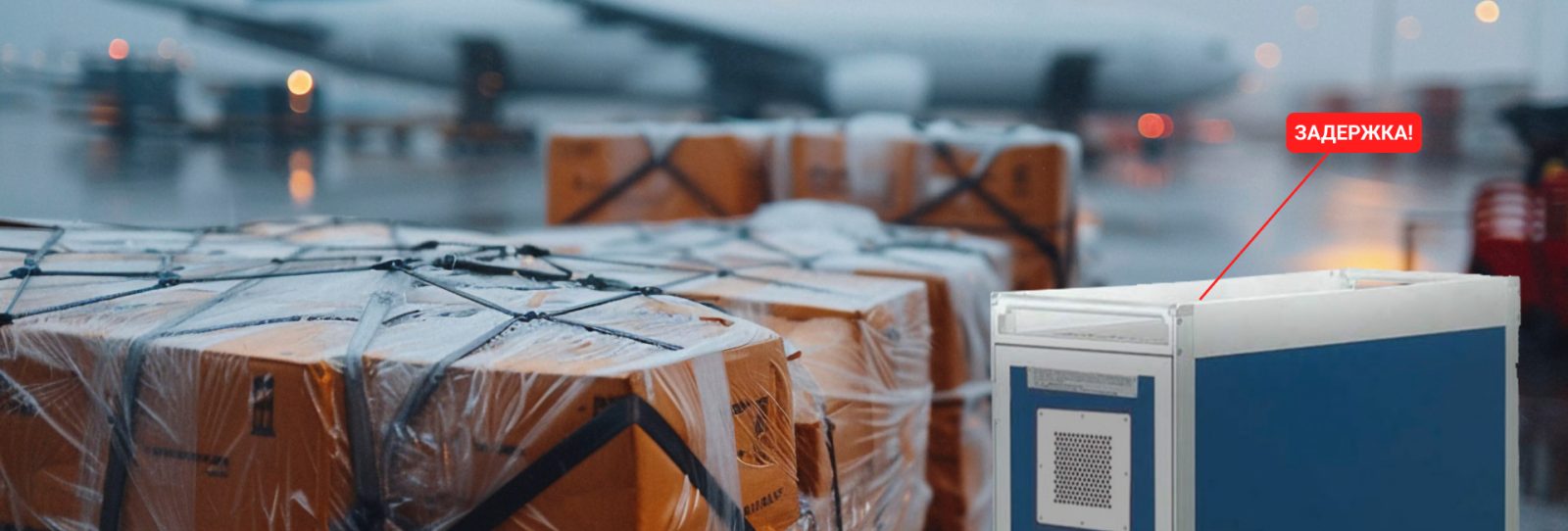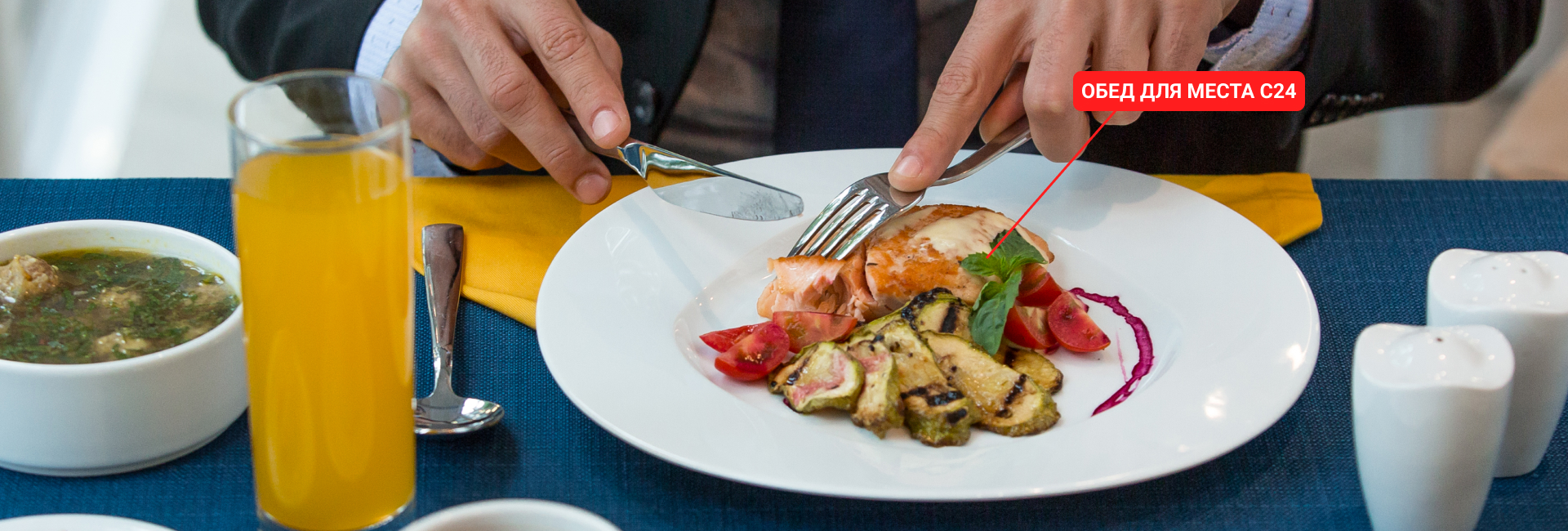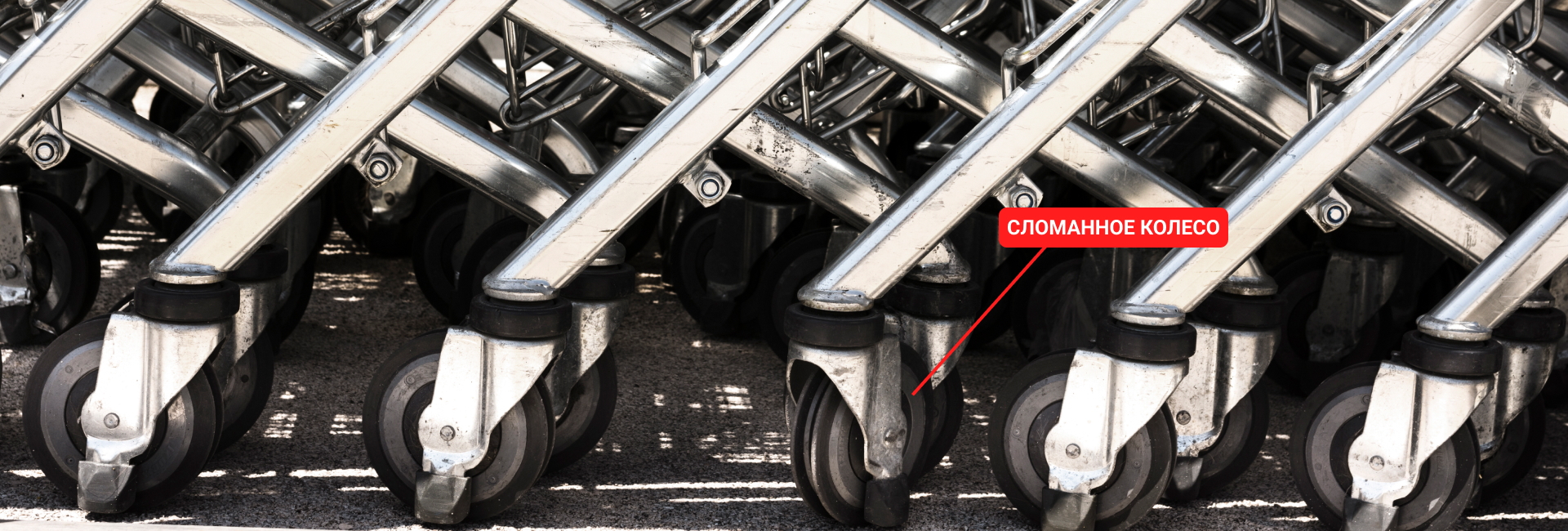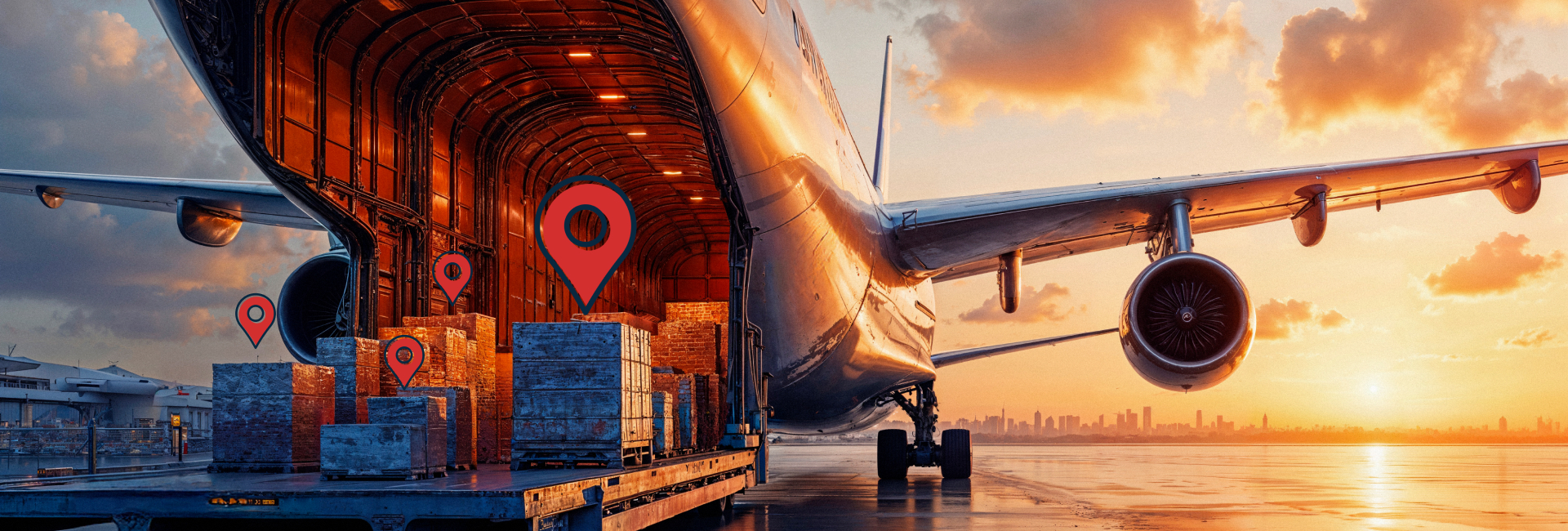The invisible chaos behind the scenes of aviation kitchens
In the giant catering complexes of international airports, where tens of thousands of on-board rations are prepared and packaged daily, there is a complex ecosystem of kitchen equipment, whose turnover resembles a well-established but extremely fragile mechanism. Each pan, heating trolley, and serving tray, worth hundreds of dollars, runs a complex route from a centralized kitchen through storage areas, loading terminals, and all the way to the aircraft cabin, where it begins its return journey after use. Traditional accounting systems based on paper logs and manual checks have long been unable to cope with the scale of modern air transportation, creating control gaps that result in millions of losses for airlines.
Modern digital tracking systems for on-board kitchen equipment are complex technological complexes combining RFID tags, Bluetooth beacons, UWB locators and cloud-based analytical platforms. Unlike outdated accounting methods that require hours of inventory and are prone to human error, the new solutions offer continuous monitoring of each piece of kitchen equipment in real time, creating a digital twin of all airline equipment. When a heated trolley leaves the catering company's warehouse, the system not only records this event, but can also predict its further route, automatically detecting anomalies and potential losses.

The anatomy of Smart control: from Tag to Cloud
The heart of the modern on–board equipment control system is a network of sensors and identifiers that turn ordinary kitchen items into connected IoT devices. Each piece of equipment is equipped with a special tag capable of withstanding extreme temperatures of washing and disinfection, while maintaining the ability to transmit a signal at a distance of up to 100 meters. These tags, working in symbiosis with a network of receivers deployed throughout the airport – from the kitchen workshops to the apron areas – create a detailed digital map of movements with an accuracy of up to 30 centimeters, which is especially critical in conditions of limited space in cargo compartments and onboard kitchens.
Dubai International Airport, after implementing an RFID tracking system for 85,000 avionics, reported a 67% reduction in inventory losses in the first year of operation. But more importantly, the system made it possible to identify non–obvious bottlenecks in logistics chains where equipment was delayed for no apparent reason. Data analysis showed that about 15% of food carts spent an extra 2-3 hours in transit areas due to suboptimal return routes. After optimizing these processes, the airport was able to reduce the total fleet of equipment by 12%, saving more than $3 million annually on purchases of new inventory alone.

Passenger experience: invisible concern for comfort
For premium class passengers waiting for delicious meals on board, equipment monitoring systems become a guarantee that specially ordered gastronomic experiences will not turn into disappointment due to lost equipment on the way to the plane. Intelligent tracking systems allow catering services to track in real time that a specific caviar feeding kit or a special baby food heater has already been loaded on board and is in its proper place. This is especially critical for transit flights, where equipment can be overloaded several times between planes, creating potential points of failure in a complex logistics chain.
Qatar Airways was able to reduce the number of incidents with missing serving items in business class by 82% after the introduction of a precision tracking system for on-board equipment. The system, integrated with the flight attendants' mobile devices, warns staff in advance of any deviations from the loading plan, allowing them to quickly resolve problems before they become noticeable to passengers. As a result, the level of satisfaction with on-board meals increased by 18 percentage points according to annual surveys, which for the premium segment airline is directly converted into customer loyalty and repeat bookings.

Airport staff: from chaotic searches to transparent control
For catering staff and ground staff, equipment tracking systems become digital assistants, eliminating the endless search for a specific cart or serving set among thousands of similar ones. Mobile terminals with integrated navigation through the interior of the airport allow you to find the necessary equipment in minutes, rather than hours, as it used to be. This feature is especially valuable in the huge warehouse complexes of hub airports, where business class inventory alone can occupy several thousand square meters of shelving space.
At London Heathrow, the introduction of an equipment positioning system for 12,000 catering staff has reduced the average search time for a specific item from 47 to 6 minutes. But more importantly, the system automatically records who took specific equipment and when, creating a transparent system of responsibility. After the system was launched, the number of inventory damage cases decreased by 41%, as each employee now knew that their actions with the equipment were being recorded and could be analyzed later in the event of an incident.

Warehouse logistics: from manual accounting to digital flow
На складах бортового оборудования, где хранятся тысячи наименований инвентаря общей стоимостью в десятки миллионов долларов, системы трекинга совершают настоящую революцию в методах управления. Умные стеллажи с RFID-антеннами автоматически фиксируют поступление и выдачу каждого предмета, исключая возможность «исчезновения» оборудования между инвентаризациями. Системы компьютерного зрения, дополняющие RFID-технологии, способны распознавать повреждения на ранней стадии – например, микротрещины в керамической посуде или деформацию металлических частей тележек, – что позволяет своевременно выводить такой инвентарь из оборота до того, как он станет причиной инцидента на борту.
Singapore-based catering company SATS, after implementing the smart warehouse system, was able to increase equipment turnover by 23% without expanding warehouse space. This was made possible by accurately analyzing the actual return dates of each type of inventory and optimizing its storage. By analyzing historical data, the system has learned to predict peak loads on specific types of equipment before holidays or major events, allowing resources to be redistributed between different airport warehouses in advance.

Traffic flows: synchronization of ground operations
Особая сложность в управлении бортовым кухонным оборудованием возникает на этапе транспортировки между кухней, складом и самолетом. Специализированные грузовики и тележки, курсирующие по перрону, часто становятся «черными ящиками», где теряется контроль над инвентарем. Современные системы трекинга решают эту проблему, устанавливая датчики не только на само оборудование, но и на транспортные средства, создавая полную цифровую цепочку перемещений. Когда тележка с подогревателями пищи покидает кухню, система автоматически проверяет соответствие списка загруженного оборудования заданию на рейс, сразу выявляя возможные ошибки.
At Frankfurt Airport, the introduction of such a system has reduced the number of errors when loading on-board equipment by 73%. Every truck heading to the plane is now equipped with a tablet that shows the driver in real time the list of inventory to be loaded and its exact location in the back. This is especially important in the maintenance of wide-body aircraft, where loading takes place through several doors at the same time, and any error in the distribution of equipment can lead to flight delays.
Boarding: precision precision before departure
The final and most crucial stage in the chain of movement of on–board kitchen equipment is its loading into the aircraft. Here, tracking systems are integrated with the aircraft's on-board systems, creating a digital twin of the entire loaded inventory. Flight attendants use their tablets to get an accurate layout of each piece of equipment in the kitchen areas, which is crucial for operational passenger service during the flight. If a cart was mistakenly loaded onto the wrong plane, the system will instantly detect this discrepancy and alert staff before the doors close.
Delta Airlines, after implementing the precision loading control system, was able to reduce the number of flight delays related to on-board power problems by 68%. The system automatically checks the loaded equipment against the menu of a particular flight, immediately identifying inconsistencies. For example, if pork carts were mistakenly loaded onto a flight with a majority of Muslim passengers, the system will give a signal before the plane departs from the gate, allowing you to quickly correct the situation and avoid a potential conflict on board.

The Future of smart control: from tracking to forecasting
The development of control systems for on-board kitchen equipment is moving towards the integration of artificial intelligence and predictive analytics. Modern systems are already beginning to not only record the current state, but also predict equipment wear, optimal routes for its movement, and even potential points of failure in logistics chains. In the future, this will lead to the creation of fully autonomous on-board inventory management systems, where most decisions will be made by algorithms based on the analysis of huge amounts of historical and real data.
Lufthansa Technik is already testing a system that, based on tracking data and usage analysis, can predict the need to repair or replace kitchen equipment before it fails. This is especially important for expensive specialized devices such as on-board ovens or coffee machines, the downtime of which can seriously affect the quality of service in the premium class. In the future, such systems will be able to automatically order spare parts or even new inventory, maintaining optimal inventory levels without excessive costs.
Conclusion: digital transparency as a competitive advantage
For modern airlines and airports, on–board kitchen equipment control systems are no longer just an accounting tool - they are becoming a strategic asset that affects key business indicators. Reducing losses of expensive inventory, optimizing logistics processes, preventing flight delays, and increasing passenger satisfaction are all directly translated into financial results and reputational benefits.
Indoors Navigation, with its unique experience in developing precision positioning systems for complex infrastructure facilities, offers the aviation sector comprehensive solutions that combine high tracking accuracy with deep analytics and ease of integration into existing processes. In an industry where every minute of downtime results in thousands of dollars in losses, and a lost serving set can ruin a passenger's experience of the entire flight, digital transparency in flight equipment management is becoming not a luxury, but a necessity.
Когда каждый предмет бортового инвентаря – от дорогой кофемашины до простой ложки – становится видимым и управляемым на всем пути от кухни до салона самолета и обратно, это меняет саму философию авиационного кейтеринга. Больше нет необходимости держать избыточные запасы оборудования «на всякий случай» – система точно знает, где находится каждый предмет и когда он будет доступен для следующего использования. Нет нужды тратить сотни человеко-часов на ручные проверки и инвентаризации – вся информация доступна в реальном времени. И самое главное – появляется возможность принимать управленческие решения, основанные не на догадках, а на точных данных, собранных со всей цепочки движения бортового оборудования. В этом и заключается подлинная ценность цифровой трансформации в авиационном кейтеринге – она превращает сложный, запутанный процесс в прозрачную, эффективную и предсказуемую систему.
Leave a request for: https://indoorsnavi.pro/
👇 Subscribe and keep up to date with innovations! 👇

